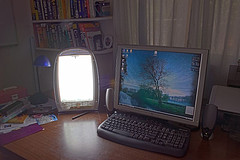HEARING AID, IT'S TYPES AND HOW THEY HELP?- BASIC CLINICAL SCIENCES
Hearing aid
A hearing aid is an electro acoustic body-worn apparatus which typically fits in or behind the wearer’s ear, and is designed to amplify and modulate sounds for the wearer.
It makes some sounds louder so that a person with hearing loss can listen, communicate, and participate more fully in daily activities. A hearing aid can help people hear more in both quiet and noisy situations. However, only about one out of five people who would benefit from a hearing aid actually uses one.The hearing aid receives sound through a microphone, which converts the sound waves to electrical signals and sends them to an amplifier. The amplifier increases the power of the signals and then sends them to the ear through a speaker.




